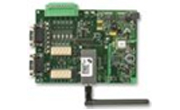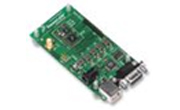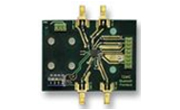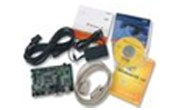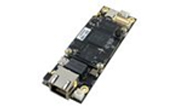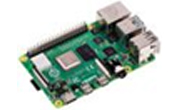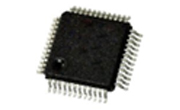Unlocking Bluetooth LE audio
The future of wireless sound
Bluetooth®LE Audio revolutionises wireless sound with superior audio quality, enhanced power efficiency and lower latency, enhancing from personal devices to public broadcasts.
What is Bluetooth LE audio?
Bluetooth®Low Energy (LE) audio is a new feature that enables audio streaming over Bluetooth®Low Energy, making it accessible to almost all Bluetooth®devices. However, devices that require a dual-mode controller for classic Bluetooth®streaming are an exception. Developed by the Bluetooth®Special Interest Group (Bluetooth®SIG), this feature represents a significant advancement in wireless audio technology.
Bluetooth LE Audio is more than an enhancement to existing Bluetooth functions like wireless calling and media streaming. It is a complete evolution of the Bluetooth audio standard. This innovation introduces new features and improvements that transform how we experience sound, focusing on better power efficiency, lower latency, and increased bandwidth.
The emerging application of LE audio
The emergence of Bluetooth LE Audio is transforming wireless audio with unparalleled flexibility, efficiency, and innovation across various sectors. It is being increasingly used in personal audio devices such as earbuds, headphones, and smart speakers, as well as in public broadcast systems in museums, conferences, and transportation hubs. In the healthcare sector, it improves hearing aids and assistive devices by offering high-quality, low-power streaming that extends battery life.
LE Audio's Auracast™ feature enables public venues to simultaneously broadcast to multiple users, enhancing accessibility. Its low-latency, multi-stream capabilities make it ideal for gaming, while personal audio sharing simplifies the process of sharing audio between devices. LE Audio seamlessly integrates into smart homes, facilitating synchronized audio across speakers and devices, and supports multi-language options in public venues. These advancements underscore the potential of LE Audio to revolutionize wireless audio across industries.
Highlights of LE audio
The advancements in Bluetooth LE Audio are categorized into three primary areas: standardization of specific capabilities, sound exposure, and enhancements to Auracast™ broadcast audio. These developments will redefine how we experience sound, driving innovation in the wireless audio landscape.
Bluetooth LE Audio is a universal wireless audio platform that has undergone significant advancements, including standardizing specific capabilities, such as the LC3 codec, ensuring high-quality audio even at low data rates. This standardization enhances user experience and compatibility across devices, making it a universal platform for wireless audio. Additionally, it has made strides in sound exposure, benefiting individuals with hearing impairments. A notable feature of Bluetooth LE Audio is its support for multi-stream audio, synchronizing multiple audio streams with ultra-low latency, particularly beneficial in situations where precise audio delivery is crucial.
Auracast™ Broadcast Audio is a groundbreaking feature of Bluetooth LE Audio. This technology enables a single audio source to broadcast to multiple receivers, opening up new public and private broadcasting possibilities. Auracast™ replaces the previous Audio Sharing feature and introduces a new Bluetooth standard that allows an audio source device to broadcast one or more audio streams to an unlimited number of audio sink devices. This feature facilitates seamless audio sharing and public broadcast access, regardless of the environment or the number of connected devices.
Classic Bluetooth®(BR/EDR) Audio is currently the most widely used audio wireless system globally. The next generation, Bluetooth®Low Energy audio, reduces power consumption and offers new possibilities for audio streams. Auracast™ broadcast audio, as part of this new standard, allows listeners to share audio with multiple listeners. It emphasizes three key elements: sharing audio, unmuting the world, and delivering optimal hearing experiences in various environments. With Auracast™, users can invite others to share their audio experiences, enjoy fully-tuned television in public spaces, and experience top-quality audio anywhere.
Below is a comparison highlighting the major differences between Bluetooth LE Audio and Classic Bluetooth.
| Feature | Bluetooth LE audio | Classic Bluetooth |
|---|---|---|
| Power consumption | Up to 50% lower | Higher |
| Audio quality | LC3 codec, high quality at 96-160Kbps | SBC/AAC codec, higher bitrates (328Kbps) |
| Latency | 20-30ms | 100-200ms |
| Data transfer | 1.4Mbps | 2Mbps |
| Multi-stream audio | Supported | Not supported |
| Broadcast audio | Auracast™ supported | Not supported |
| Compatibility | Backward compatible with restrictions | Widely compatible but lacks new features |
| Connection range | 10-30 meters (33-98 feet) | 10-30 meters (33-98 feet) |
| Security | Enhanced encryption and privacy features | Standard security |
With these advancements, Bluetooth LE Audio is set to become the foundation for future wireless audio innovations, driving the development of new devices and applications, such as advanced hearing aids, gaming experiences, and next-generation audio-sharing technologies. By setting new standards, Bluetooth LE audio enhances sound exposure and broadcast capabilities, paving the way for a more connected audio future.

Figure 1: Overview of the bluetooth LE audio specifications (Source)
- Stream management: New specifications ensure essential interoperability for audio devices, covering the discovery and configuration of unicast and broadcast audio streams. Key components include Basic Audio Profile (BAP), Published Audio Capabilities Service (PACS), Audio Stream Control Service (ASCS), and Broadcast Audio Scan Service (BASS).
- Media control: This specification defines how media is controlled through Media Control Profile (MCP) and Media Control Service (MCS).
- Call control: This function sets the standards for call control across all telephony types, using the Call Control Profile (CCP) and Telephone Bearer Service (TBS).
- Common audio: Manages isochronous audio streams with multiple devices in multi-service scenarios, integrating media and volume controls via Common Audio Profile (CAP) and Common Audio Service (CAS).
- Coordinated devices: Identifies and manages devices that are part of a coordinated set, such as true wireless earbuds, through the Coordinated Set Identification Profile (CSIP) and Coordinated Set Identification Service (CSIS).
- Microphone control: Specifies microphone control with Microphone Control Profile (MICP) and Microphone Control Service (MICS).
- Volume control: Establishes standards for volume and balance control, including the Volume Control Profile (VCP), Volume Control Service (VCS), Volume Offset Control Service (VOCS), and Audio Input Control Service (AICS).
LC3 codec
An audio codec is crucial for compressing an audio stream at the source for transmission and decompressing it at the receiving end for playback. The performance of a codec is determined by three key parameters: Sample Rate (Hz), Bit Depth (bits), and Bit Rate (kbps). Sample Rate captures signal amplitude at a specific point in time, while Bit Depth refers to the number of bits in each sample. Higher sample rates result in a closer compressed stream to the original but also result in larger audio file sizes. Bit Rate, measured in kilobits per second, correlates with the audio quality of the stream. Good quality music has a bit rate of 96 kbps or greater. According to the Nyquist Sampling Theorem, the sampling frequency should be double the original signal frequency.
Bluetooth®LE audio is based on the Low Complexity Communication Codec (LC3) developed by Fraunhofer. This codec is mandatory and provided for free for Bluetooth®LE audio products, ensuring full interoperability without needing vendor-specific codecs. LC3 offers superior quality compared to the mandatory codec in classic Bluetooth®audio, is channel independent, and is suitable for music and voice applications. It also allows low latency, as defined in audio profiles. LC3 replaces Sub-band Codec (SBC) and supports multi-stream and true wireless (TWS) earbud applications by facilitating independent left and right audio streams that are highly synchronized.
Technical properties of LC3 include
- Block-based transform audio codec
- Wide range of usable bitrates
- Frame interval of 10 ms and 7.5 ms
- Supports the following bit depths: 16, 24, and 32 bits per audio sample
- It supports an unlimited number of audio channels
- It supports the following sampling rates: 8 kHz, 16 kHz, 24 kHz, 32 kHz, 44.1 kHz, and 48 kHz
Assessing the quality of codecs involves comparing audio quality before and after compression and decompression. In addition to subjective live listening tests, there are also objective quantitative methods for measuring codec performance.
Connectivity BLE audio latency
Regarding Bluetooth®LE audio, it addresses audio latency concerns by managing various sub-latencies, such as buffering delay, algorithmic delay, presentation delay, application delay, controller delay, and transport delay. Buffering delay is the time required to buffer a frame and is influenced by the codec used. Algorithmic delay ensures seamless signal continuity during mathematical transformations. Presentation delay can be adjusted by profiles within a supported range to _synchronize multiple devices.
Application delay is external to the controller, with a minimum determined by the audio processing speed and a maximum related to buffering resources. Controller delay is internal to the controller, with a minimum tied to codec processing speed and radio preparation time, and a maximum determined by buffering resources.

Figure 2: Latencies illustration for unframed mode (Source)
The link layer introduces transport latency, which is illustrated in (Figure 2) and represents the maximum time for transmitting a packet over an isochronous link. A higher transport latency allows more opportunities to retransmit a packet, improving service quality. Presentation delay, negotiated by Bluetooth®LE audio profiles, helps to _synchronize audio when multiple servers or broadcast sinks are involved. The device splits the delay between the Controller and Application delays at the application level based on the range of both.
Example of Bluetooth LE Audio supported MCU
The microcontroller families, MAX32655 and MAX32665, are well-suited for developing LE Audio applications. These chips support multiple high-speed connections on the 2 Mbps PHY, enabling seamless audio sharing and True Wireless Sound across devices. With multiple processors, these families allow flexible partitioning of the Bluetooth stack and LC3 codec, while supporting additional signal processing of sensors and peripherals. The MAX32665 family is especially suitable for applications that require more memory, flash, and processing power.
In Figure 3, it is illustrated that the MAX32655 MCU is an advanced system-on-chip (SoC) equipped with an Arm® Cortex®-M4F CPU, providing efficient computation for complex functions and algorithms. It supports Bluetooth 5.2 LE radio, which includes features like LE Audio, Angle of Arrival (AoA), and Angle of Departure (AoD) for direction finding, long-range (coded), and high-throughput modes.

Figure 3: Internal block diagram of MAX32655 MCU (Source)
Bluetooth 5 LE radio is the latest wireless communication technology, designed for low-power operation. It is ideal for wireless audio devices and IoT applications. Operating in the 2.4GHz ISM band, it uses a frequency-hopping transceiver to minimize interference. Bluetooth 5 technology supports various data rates (1Mbps, 2Mbps, and Long Range coded), enhanced broadcasting capabilities, on-chip antenna matching, and hardware encryption/decryption, all contributing to lower power consumption. It also supports mesh networking and high-quality isochronous audio streaming with optimized power efficiency, including a transmit power of up to +9.5dBm and low current consumption during transmission and reception.
MAX32655 bluetooth stack overview
The Bluetooth Stack Overview (Figure 4) features a dedicated Bluetooth hardware accelerator that eliminates the need for application software to meet strict timing requirements. This design enhances system performance and reduces overall power consumption.

Figure 4: Maxim bluetooth stack overview (Source)
Maxim provides the Arm Cordio®-B50 stack in a library format, making it easy for developers to integrate Bluetooth functionality without extensive software validation and development. This stack interfaces directly with the Bluetooth link layer, which runs on dedicated hardware, ensuring optimal power management for IoT applications. To ensure proper operation, the Radio and Hardware Accelerator require a 32MHz external crystal, as specified in the datasheet. Additionally, the CPU core hosting the Arm Cordio-B50 stack must operate at a speed greater than 32MHz.
Stay informed
Keep up to date on the latest information and exclusive offers!
Subscribe now
Thanks for subscribing
Well done! You are now part of an elite group who receive the latest info on products, technologies and applications straight to your inbox.
